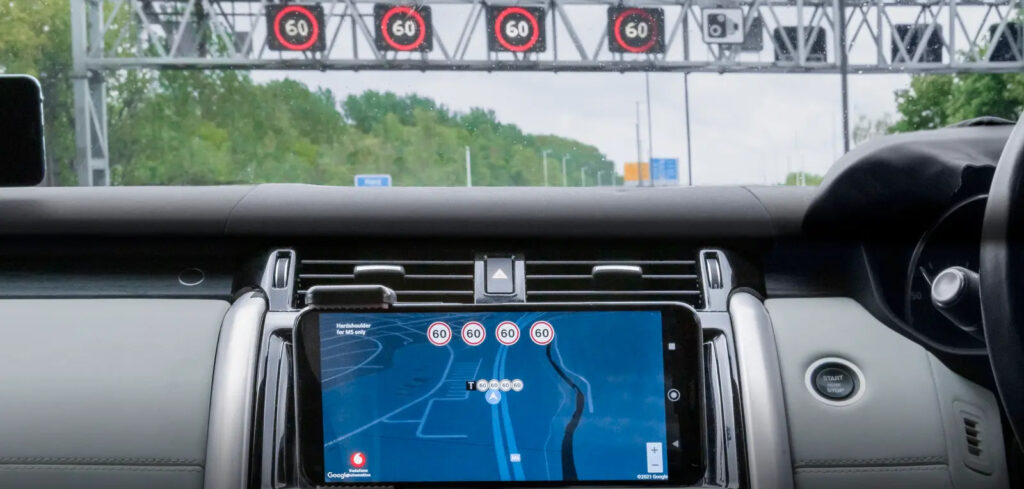A mobility cloud platform to improve the safety of road users is being tested for the first time on the open road in the UK. Developed by Vodafone, Nokia and Chordant, with support from the UK Government Centre for Connected and Automated Vehicles (CCAV) and the Midlands Future Mobility (MFM) consortium, the platform is providing digitally connected road users in the West Midlands with live, highly localized and targeted updates from road operators on lane closures, speed restrictions and traffic incidents.
Road authorities are also trialling the platform to control and ease traffic jams and make informed planning decisions using secure, anonymized and aggregated vehicle position data sent up to 10 times every second from users who have opted into the service. This capability could be extended for emergency services when responding to an incident such as someone driving the wrong way on a motorway, or for breakdown recovery organizations to assist vulnerable road users.
According to participants in the trial, this is an example of how CAM Testbed UK – the UK’s test facility for connected and automated mobility (CAM) – is enabling innovation and the development of new technologies critical to the safe, mass adoption of connected and self-driving vehicles.
With the open platform at its center, Vodafone states it is creating an ecosystem of connected vehicles, cyclists and pedestrians across Europe and Africa, with each one acting as the ‘eyes and ears’ of the road. It notes that more than 70% of all cars built in 2020 have digital telematics capabilities already, and now Vodafone is working with private- and public-sector organizations to extend the advantages of integrating in-vehicle connected systems within the wider connected transport ecosystem.
Using Vodafone’s fast 4G and 5G network and built-in advanced multi-access edge computing (MEC) technology, the platform allows real-time road information from Highways England to be displayed initially on users’ smartphones, and in the future on in-car infotainment systems.
The platform works with Convex, Chordant’s mobility data exchange facility, to enable dynamic data to be exchanged with road operators and their traffic systems. It is the UK’s first live implementation of cellular vehicle-to-everything (C-V2X) technology. C-V2X combines the latest mobile technologies with in-vehicle computer systems to create new mobility services for improved safety and reliability as well as allowing road operators to build ‘greener’ and more sustainable transport networks.
Luke Ibbetson, head of group R&D at Vodafone, commented, “It’s fantastic to see vehicle-to-everything mobile technology being deployed on the open road for the first time in the UK. While the system is delivered via smartphone, drivers will need to use hands-free equipment. Meanwhile, we are working with the automotive industry and road operators to have the technology integrated within vehicles and transport infrastructure to make our roads safer.”


